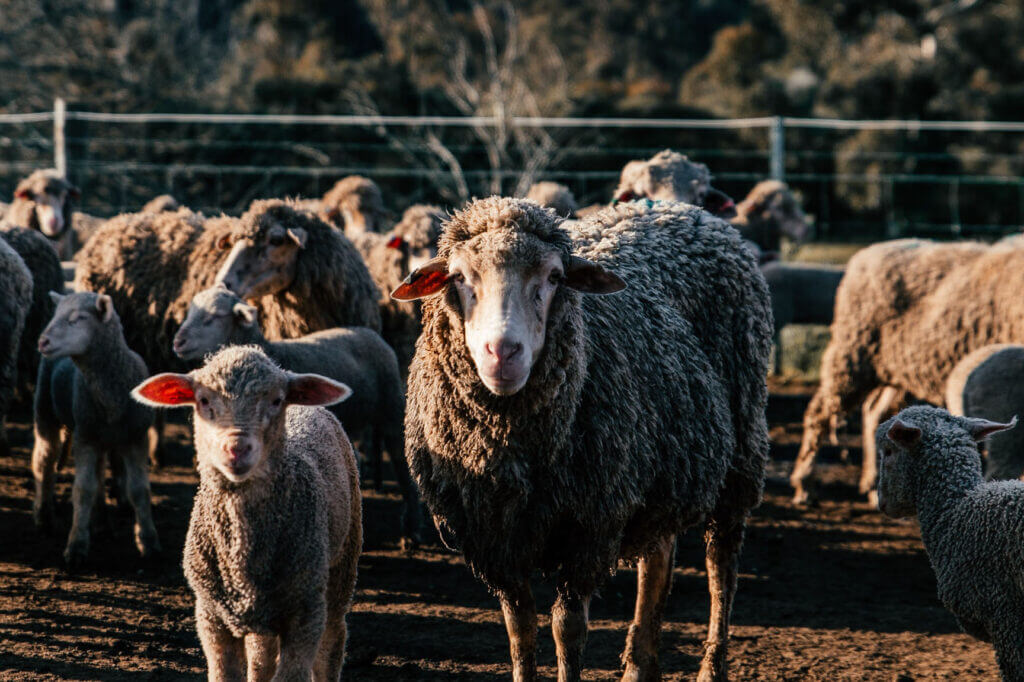Lamb is a popular dish on the menu and you occasionally hear of mutton (dressed as lamb), but have you ever seen a sheep dish? Most people don’t know the difference between the three and there is great confusion over the quality of each.
In this blog post Halal Origins takes out the mystery and explains the key differences, so you can appreciate all that lamb and mutton have to offer in your kitchen preparations.
Here’s the thing, lamb, sheep and mutton are meat that derives from the same animal. Yes, that’s right. Take a moment to process that. The fundamental difference between them is the age of the animal, but that’s not all because the age of the animal has wider implications on the animal’s diet and subsequently the profile of the meat.
Let’s take a look.
Lamb
A lamb is a baby sheep or a sheep that is less than 12 months old. A lamb normally reaches market weight after approximately 6 months, but this can depend on factors like genetics, breed and diet. Typically, a lamb will not be taken to slaughter until it reaches at least 80 pounds (approximately 36 kgs) but is often left to grow until it reaches 110 pounds (approximately 50 kgs) to ensure that the muscles have more time to develop. More time also permits more fat generation, which has a significant impact on the lamb’s flavour profile.
Lambs are typically fed milk in the early stages of their life and then move on to creep feed, which are solid grains fed during the weaning phase of their lives. This significantly enhances growth speed and size.
Lamb meat is considered flavourful, but its most favoured characteristic is its tenderness. The expression ‘off the bone’ is normally applied to lamb meat that is so tender that it detaches from the bone without the need to cut it with a knife.
Lamb is considered a delicacy in many cultures and there are many famous dishes centred around lamb meat. Some examples include the Greek lamb dish of Kleftiko and the Morrocan dish of Lamb Tangine. Both dishes are similar, with the only major difference being the pot they are cooked in.
Check out some of our lamb offers. We have an entire page dedicated to lamb cuts.
Sheep
Sheep is a lamb that is older than 1 year, but normally less than two years old. It is uncommon to find sheep meat at the market. This is because sheep are often kept for other reasons than for their meat. For example, their woolly coats, their milk, and for land management.
Real sheep’s wool is an expensive commodity. It is a fleece material that is used to line winter jackets and even makes entire jumpers. This is because of the natural insulating qualities, which are much more effective than artificially polyester materials that are commonly found in mass-production clothing.
Sheep’s wool contains a natural resin called Lanolin that has medicinal properties. This is normally recovered and sold during the treatment of the wool before it is made into clothing.
Sheep are often used to graze vast spaces of grassland in order to preserve the natural habitat as nature intended. This is because grazing is a natural cycle and the sheep fertilize the soil when they poo. It is quite common for beef farmers to rotate sheep and cows on land to ensure that the soil gets the right mixture of nutrients over time, which is good for crop rotation.
Once sheep become mature, which is normally after 2-3 years, they are considered beyond their useful lives for milk and wool, so they are sent to market as mutton.
Mutton
The meat from mature sheep is called mutton. Meat from these older animals has more flavour and is preferred by more traditional eaters over lamb especially if the lamb is grass or grain fed.
Mutton is not as tender as lamb and often needs tenderising before cooking, but mutton more than makes up for this with its rich flavour profile. Mutton’s flavour comes from its higher fat content and because the muscles develop more because of their longer and more active lives. Typically speaking, a carcass of mutton has more meat on it than a lamb owing to its long life and because mutton is cheaper than lamb, you will find that your money goes a lot further in terms of the quantity you will receive pound for pound.
Mutton, although a cheaper cut of meat, is not to be underestimated and it should certainly not be underappreciated. Try a mutton stew to really grasp the depth of flavour of this wonderful meat choice. We have no doubt that you will be coming back for more.
Here at Halal Origins, we pride ourselves on delivering the best quality meat at the most affordable prices. We have a range to suit every budget; whether you want organic chicken, organic lamb, organic beef, or non-organic grass-fed mutton, we are ready to deliver direct to your door.
We hope you’ve enjoyed this article and now you can show off your new culinary knowledge to your friends.

